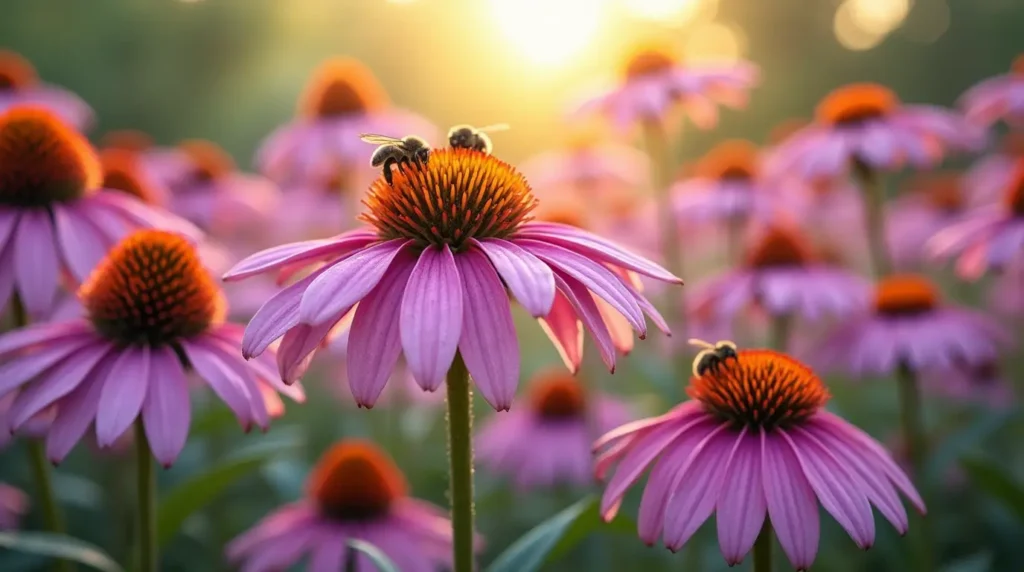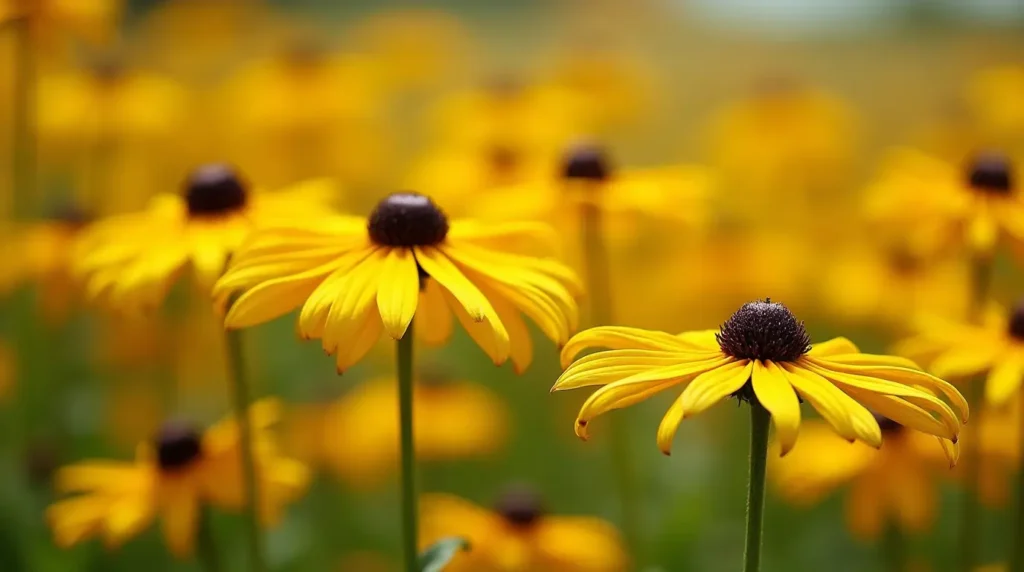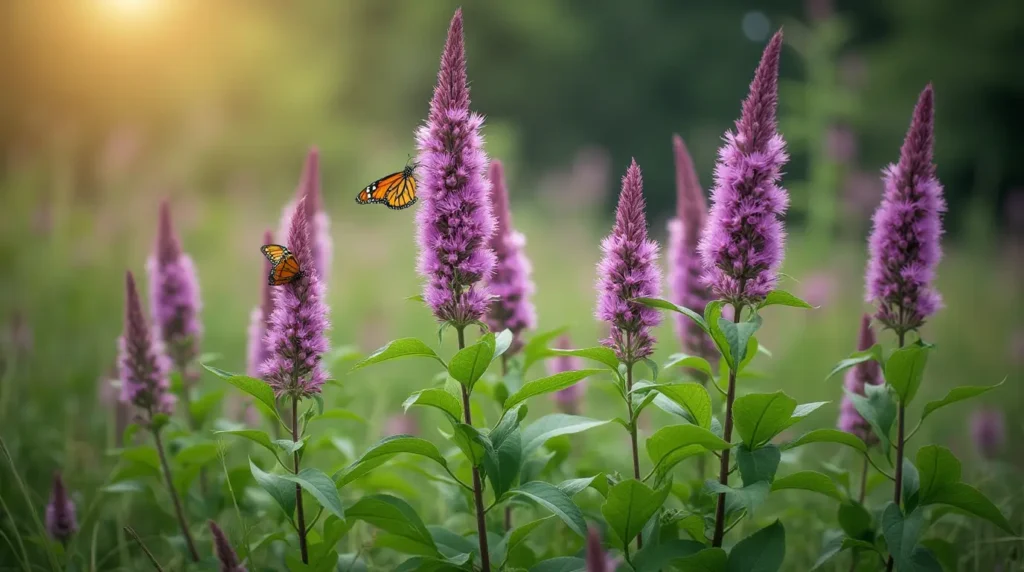Welcome to Your Native Garden Journey
Did you know that planting native species can boost your local wildlife population by up to 60%? When you embrace native plants, you’re not just beautifying your garden—you’re also inviting a vibrant ecosystem right to your doorstep.
Imagine stepping outside and being greeted by the delightful sights and sounds of birds, butterflies, and bees. By choosing native plants, you are creating a sanctuary that thrives on the unique environment of your region. These plants are adapted to local soil, climate, and wildlife, ensuring lower maintenance and greater resilience.
In this article, you will discover the beauty and benefits of native plants, learn how to select the best ones for your garden and get tips on caring for your natural oasis. Embrace nature with us, and watch your garden flourish!




Top 10 Indigenous Plants Thriving in My Garden
Understanding Native Plants
What Are Native Plants?
Native plants are species that have naturally evolved in a specific region without human intervention. They are beautifully adapted to the local climate, soil conditions, and native wildlife. Unlike their non-native counterparts, native species thrive in their environments, requiring less water, fewer chemical fertilizers, and less maintenance. This makes them perfect companions for your garden, inviting sustainability into your landscape.
Ecological Importance
One of the most compelling reasons to embrace native plants is their ecological significance. Native flora forms the backbone of local ecosystems, playing crucial roles in sustaining wildlife. For example, many pollinators, such as bees and butterflies, exclusively rely on native plants for their food and habitat. Did you know that plantings of native wildflowers can increase pollinator populations by 50% or more? This symbiotic relationship not only supports our essential pollinators but also helps stabilize local ecosystems.
Supporting Local Wildlife
When you incorporate native plants into your garden, you create a welcoming environment for a variety of creatures. Birds, insects, and small mammals find haven and nourishment in native landscapes. Consider planting milkweed—it’s indispensable for monarch butterflies, serving as their sole food source during the larval stage. Additionally, native shrubs and trees provide crucial nesting sites and cover for birds, helping to enhance biodiversity right in your backyard.
Promoting Biodiversity
Biodiversity boosts ecosystem functionality, enabling systems to adapt to changes and stresses. A garden rich in native plants encourages a diverse range of life, facilitating natural pest control and reducing the variability of plant diseases. When you select native species, you actively join a vital effort to preserve that diversity. By doing so, you’ll foster a harmonious, resilient space that benefits both yourself and the environment.
When planning your native garden, understanding the power and role of these plants is key to maximizing their potential. As you dive deeper into the world of native gardening, you’ll learn how to select the right plants for your unique region, ensuring your efforts yield a thriving ecosystem that flourishes season after season.
Selecting the Right Native Plants for Your Region
Choosing the right native plants for your garden can set the foundation for a thriving ecosystem. Start by understanding your specific climate and soil conditions, as these elements are critical in determining which plants will thrive in your space.
Know Your Climate Zone
Every area has its own climate characteristics, and understanding yours can significantly impact your plant selection. Look for resources like the USDA Plant Hardiness Zone Map, which breaks down regions based on average annual temperatures. This will help you identify plants that are not only native but also well-suited for your local climate.
Assess Your Soil
Soil quality can vary widely, affecting how plants grow. Conduct a simple soil test to determine its composition—whether it’s sandy, clayey, or loamy—and check its pH. Here are some tips to assess your soil:
This information will guide you in selecting plants that are not only regionally appropriate but also soil-savvy, ensuring they flourish.
Research Local Flora
Turn to local resources for guidance on native plants. Botanical gardens, native plant nurseries, and local extension services can provide lists of species that thrive in your area. Additionally, online databases and community forums can connect you with fellow gardeners who share their experiences and successes with specific native plants.
Consider these online resources:
Local Ecosystem Support
Choosing plants that support your local wildlife is essential. Look for native plants that provide food and habitat for birds, bees, and other beneficial insects. For example, in the northeastern United States, serviceberry (Amelanchier) is not only beautiful in spring, but its berries also feed various bird species throughout the summer.
Make it Personal
No garden is complete without a personal touch. Think about your favorite local plants you’ve seen while hiking or exploring your neighborhood. This way, you not only create a garden that supports local wildlife but also one that resonates with your personal experiences and memories.
Now that you’ve gathered the knowledge to make informed decisions, you’re on the brink of discovering five remarkable native plants that can transform your garden into an enchanting wildlife haven. Let’s explore these essential choices in the next section!
Five Essential Native Plants for Your Garden
Selecting the right native plants is key to creating a flourishing garden that thrives on local conditions. Here, we’ll take a closer look at five essential native plants that can elevate your garden and enhance its beauty along with its ecological value. Each of these plants is chosen for their unique characteristics, benefits, and ease of care, ensuring that your journey into native gardening is both rewarding and successful.

1. Purple Coneflower (Echinacea purpurea)
Characteristics: With its striking purple petals and prominent cone-shaped center, the purple coneflower is a perennial favorite. Reaching heights of 2 to 4 feet, it blooms from mid-summer to early fall, attracting pollinators with its vibrant flowers.
Benefits:
Care Tips:

2. Black-Eyed Susan (Rudbeckia hirta)
Characteristics: Known for its cheerful yellow petals with a dark brown center, the black-eyed Susan is a versatile plant that grows between 1 to 3 feet tall. It typically flowers from late spring to fall.
Benefits:
Care Tips:

3. Joe Pye Weed (Eutrochium purpureum)
Characteristics: A tall native perennial that can grow up to 6 feet tall, Joe Pye Weed features clusters of pink-to-purple flowers that bloom from mid-summer to fall. Its great height makes it a stunning backdrop in your garden.
Benefits:
Care Tips:

4. New England Aster (Symphyotrichum novae-angliae)
Characteristics: This perennial bursts into bloom in late summer to fall with stunning purple flowers adorned with yellow centers. Growing 3 to 6 feet tall, the New England aster adds a spectacular pop of color to your garden.
Benefits:
Care Tips:

5. Wild Bergamot (Monarda fistulosa)
Characteristics: Wild bergamot, also known as bee balm, is a fragrant perennial that sports lavender to pink flowers and can reach heights of 2 to 4 feet. It’s not only beautiful but is also a favorite among bees and hummingbirds.
Benefits:
Care Tips:
Creating a garden that thrives on native plants not only beautifies your outdoor space but also fosters a rich habitat for local wildlife. As you select these essential native plants, consider how they fit together in your unique environment. Next, we will delve into how to design your garden effectively, ensuring that your native plants flourish together in a harmonious and vibrant landscape.
Designing Your Garden with Native Plants
Designing a garden using native plants opens up exciting possibilities that marry aesthetics with ecological responsibility. By thoughtfully considering layout, color, and companion planting, you can create a space that is not only beautiful but also functional and supportive of local wildlife.
Layout Ideas
The layout of your garden can significantly impact accessibility and visual interest. Here are some key strategies to consider:
Companion Planting
Companion planting is an age-old practice that can significantly benefit your garden’s health. Certain native plants complement each other by enhancing growth or providing pest control. Here are a few pairings to consider:
Adding structure to your garden design with native plants allows for creativity while enhancing biodiversity.
Practical Tips
To get started, follow these practical tips:
As you design your garden, visualize how these native plants will interact with each other, not only in their aesthetics but in their ecological relations. With thoughtful planting and arrangement, your native garden can become a vibrant symphony of colors and textures. Let’s move on to learn how to care for these native plants effectively, ensuring they thrive and flourish within your landscape.
Caring for Your Native Plant Garden
Creating a garden filled with native plants is a rewarding venture, but to ensure its long-term success, regular care and attention are essential. Caring for your native plant garden involves some straightforward techniques focused on watering, mulching, pest management, and seasonal adjustments. Following these best practices will help your plants thrive in harmony with nature.
Watering Wisely
While many native plants are drought-tolerant once established, they will need your care during their initial growth phase:
Remember, early morning is the best time to water to minimize evaporation and allow your plants to absorb moisture efficiently.
Mulching for Success
Mulching is a wonderful way to protect your native garden while enhancing its beauty:
Pest Management
Native plants are generally more resilient to pests, but it’s still wise to keep an eye on potential problems:
Seasonal Adjustments
Adapting your care routine through the seasons can enhance your garden’s longevity:
Caring for your native plant garden is about striking a balance between active involvement and allowing nature to take its course. With proper watering, mulching, and pest management, your garden will flourish while supporting local wildlife for years to come.
As you embark on this nurturing journey, anticipate the joy of watching your garden evolve through the seasons. In doing so, you’ll celebrate the natural beauty and ecological importance of your native garden, creating an enduring legacy for both yourself and the vibrant wildlife surrounding you.
Celebrate Your Native Garden
Nurturing a garden filled with native plants is a deeply rewarding experience. As you watch your garden flourish, you’ll not only create a beautiful space but also support local ecosystems and wildlife. Embrace the vibrant colors, unique textures, and the sense of harmony that native plants bring to your environment.
Take pride in your choice to cultivate these resilient species. By doing so, you play a crucial role in promoting biodiversity. So, step outside, dig your hands into the soil, and celebrate the natural beauty that surrounds you. Your native garden is a testament to your commitment to a healthier planet.
Frequently Asked Questions
What are native plants?
Native plants are species that naturally occur in a specific region, ecosystem, or habitat and have adapted to local conditions over thousands of years without human intervention.
Why should I choose native plants for my garden?
Native plants require less maintenance, are well-suited to your local climate, and support biodiversity by attracting and sustaining local wildlife.
How do I select the right native plants for my region?
Find out your climate zone, assess your soil, and research local flora using native plant guides or by consulting local nurseries and community experts.
What are the ecological benefits of native plants?
Native plants improve soil health, support pollinators, help control erosion, and promote balanced ecosystems by preventing invasive species.
Do native plants attract wildlife?
Yes, native plants provide food and shelter for bees, butterflies, birds, and other local animals, helping to sustain healthy wildlife populations.
Do I need to water native plants often?
Once established, native plants generally require little watering, since they are adapted to the rainfall and moisture conditions of their natural habitat.
What are five essential native plants for my garden?
Top choices include Purple Coneflower (Echinacea purpurea), Black-Eyed Susan (Rudbeckia hirta), Joe Pye Weed (Eutrochium purpureum), New England Aster (Symphyotrichum novae-angliae), and Wild Bergamot (Monarda fistulosa).
How can I design my garden with native plants?
Plan your layout by considering plant heights, companion planting, and seasonal flowering to create a visually appealing and beneficial garden year-round.
Are native plants easy to care for?
Absolutely! Native plants are usually easier to care for than exotic species, making them perfect for both beginner and experienced gardeners.




I think native gardening is awesome, but why isn’t anyone talking about how it can take time to establish? I planted companions last year and they’re still baby plants. 🤨
Totally get that! Patience is key with native plants. They do take a while to settle in.
True! It’s all about building a healthy ecosystem over time.
Those terracotta pots look cute! 🧡 How many plants can I fit in one? I have a tiny balcony and want to maximize it!
Great question, Olivia! You can fit about 2-3 smaller plants in each terracotta pot depending on their size.
I think those mini pots are perfect for herbs! They’d be great on a balcony.
Lol, I hope my garden doesn’t look like a jungle this year! 😂 But I’m feeling inspired. Would the Texas native plant guide work for other states too?
Yeah, it’s a good start but check local guides too for specific plants!
The Texas guide is specialized, but it has lots of useful tips applicable in other regions!
I love the idea of embracing native species! But I’m unsure about planting in the fall. Is that a good idea?
Exactly! I always plant my natives in fall. They bounce back beautifully in spring.
Fall is actually a great time to plant native plants! They can establish roots before winter.
Love this article! 🌼 Just started my garden and I had no idea native plants could be so colorful and low maintenance. Can’t wait to check out the wildflower seeds! Do they attract butterflies?
Absolutely, Samantha! Wildflowers are great for attracting butterflies and other pollinators. They’re a fantastic addition to any garden! 🦋
I use wildflower seeds every year—they bring in so many butterflies! Definitely recommend it.
Seems like everyone is heading towards sustainable gardening! It’s the way to go! Do I need to water native plants more in the first year?
Yes, that’s important! They need extra water to establish their roots.
Definitely! After they’re established, they usually need less water compared to non-natives.
Never realized my yard could become a wildlife sanctuary! I’m definitely getting those bulk wildflower seeds. 🎉 Any other products you guys would suggest?
The companion planting guide is great for maximizing your garden’s health!
Thats a great idea, Oliver! I also love the mini pots for starting seedlings.
Interesting read! I didn’t know much about native plants before. 🤔 What’s the best choice for a shady backyard?
I’ve had luck with native ferns! They’re so lush and beautiful under trees.
For shady spots, consider plants like ferns or hostas. They thrive in low light!
So excited about the tips for garden design! 📸 I want to create a butterfly garden—any other essential plants I should add besides the ones mentioned?
Milkweed is a must! Also, don’t forget to include some flat-topped flowers for landing spots.
Consider adding milkweed and coneflower! They’re fantastic for butterflies.
This is super helpful! I struggle with keeping my plants alive, so I’m very interested in the care section of the article. Are the all-natural garden mulch products safe for pets?
All-natural mulch is a game changer! My dogs love to dig but this stuff keeps them safe.
Yes, the all-natural garden mulch is safe for pets. Always good to double-check ingredients, though!
Finding the right plants is a challenge for me. Glad to have this list! What’s the growing season like for the perennial wildflower seeds?
Typically, perennial wildflower seeds bloom in their second year. Just be patient!
Perennial seeds are great because they’ll come back every year! Totally worth the wait.
This whole native gardening movement is great! 🌱 But what if I have to deal with invasive species? Any tips?
Removing invasive species is key before planting natives! Regular maintenance helps too.
I’ve tackled invasives before—it’s not easy but worth the effort for native plants!